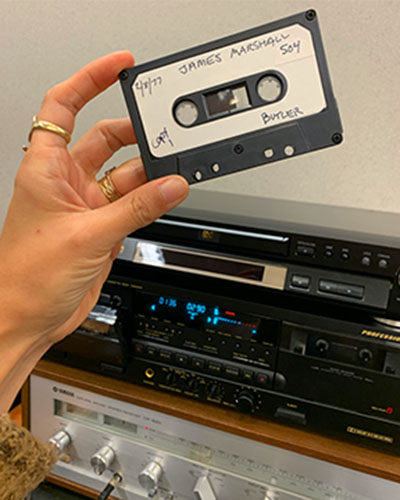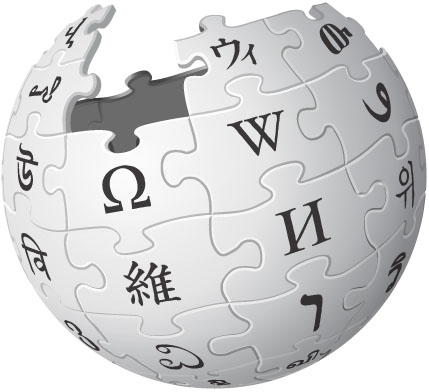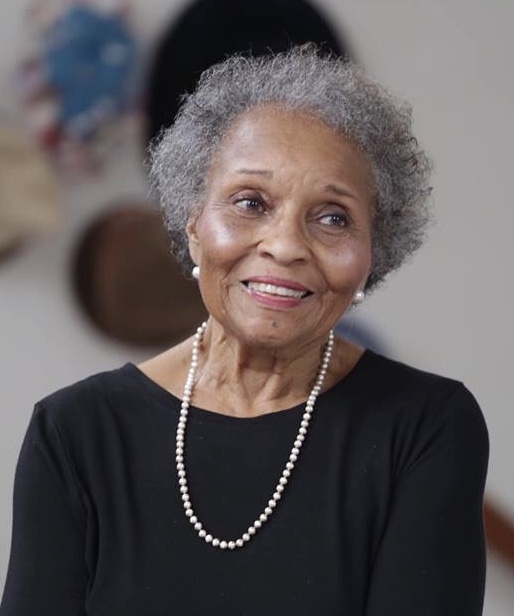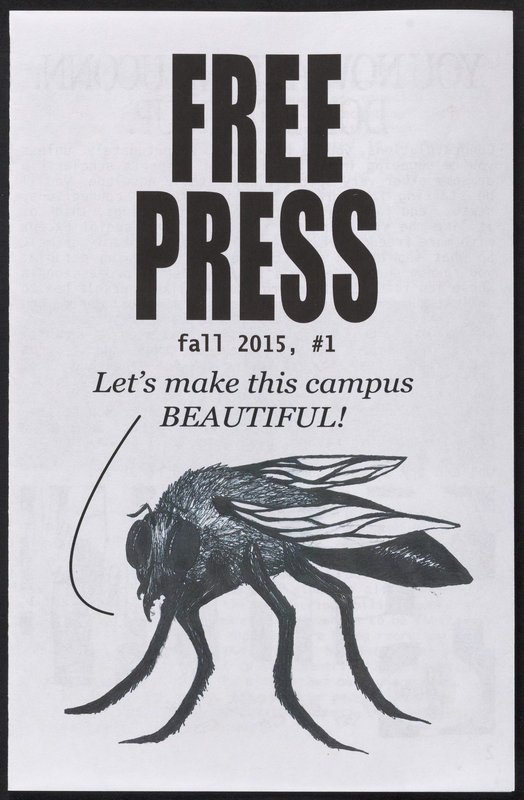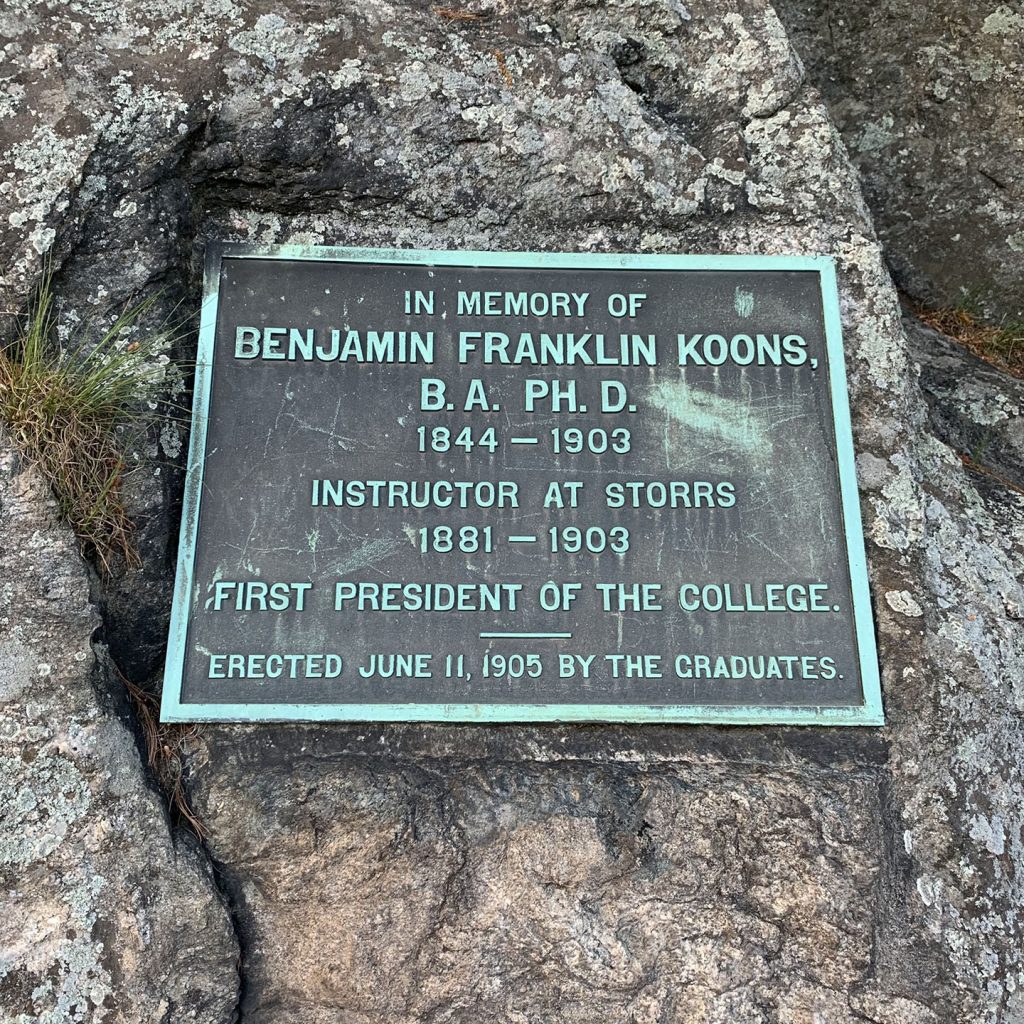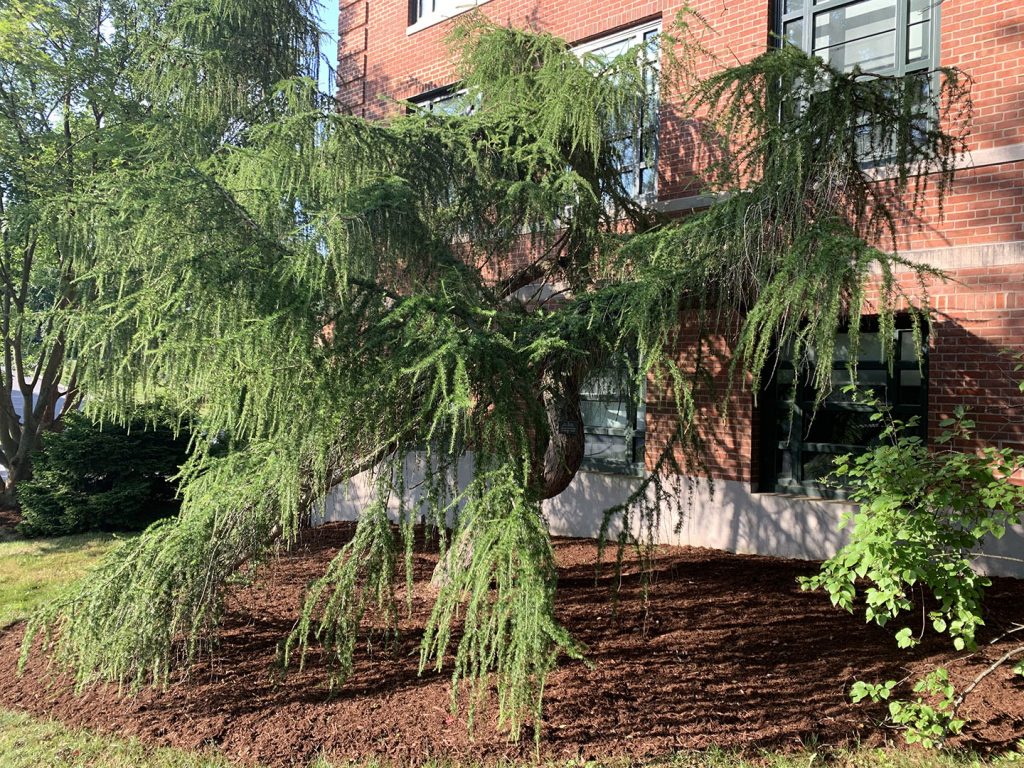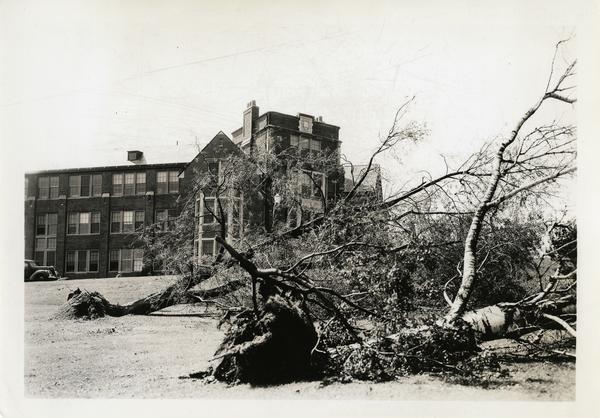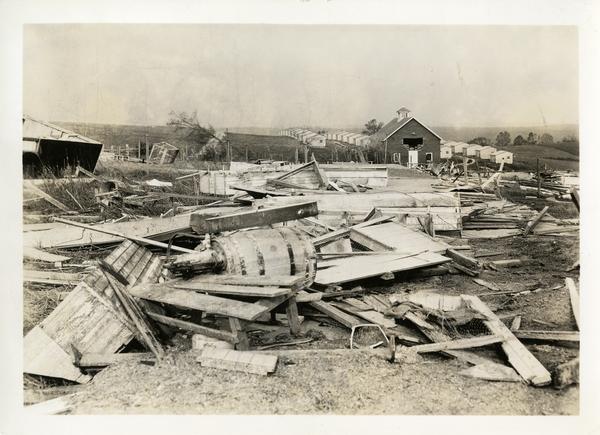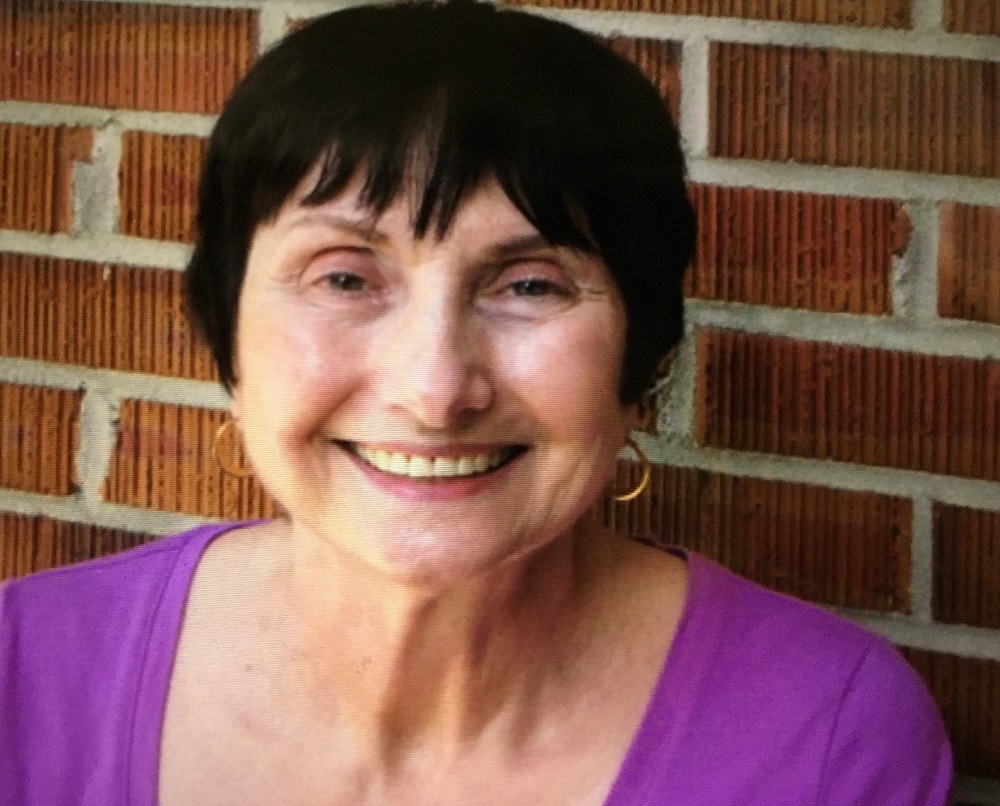A project created by Cameran Kershner, UConn English Department Writing Internship, Spring 2022
[slideshow_deploy id=’9630′]
Introduction
As the Civil Rights Movement gained momentum in the early fifties, a massive response followed in the form of black activist groups emerging across the country. There are famous faces that appear in history books such as Martin Luther King Jr. and Malcolm X, who have contributed enormously to the fight for equal rights. However, a large percentage of those who participated are the students who led protests on campuses across the country, carrying on the fight against systems of oppression in their own communities in order to create opportunities for equal representation, education, employment opportunities, and a fair future for all.
In an overview of what these sources have in common, each shows the intersectionality that’s present between the Civil Rights Movement, the Vietnam War, and the working-class struggle – showing how Black Americans were disproportionately affected by issues of racism, classism, and economic and academic disparities. They also show how students and the younger generations as a whole were becoming aware of these issues and how this inequality was playing out on their own campuses, and how they leveraged the privilege they had to advocate for a fair and equitable learning environment for students and faculty of color.
Here at UConn’s Archives & Special Collections, there are numerous resources that can help provide insight into the actions of both large and small organizations and what they have done for their communities. These sources are located in the Alternative Press Collection, home to many resources that document revolutionary and justice movements throughout time. What makes this collection special is that most of the materials were collected contemporaneously, or at the moment. Flyers that were pulled off of telephone poles or picked up at protest meetings, underground publications spread through word of mouth, and newspapers hot off the presses into students’ hands and held as a symbol of rebellion within UConn’s archives. If this unique look at the Civil Rights Activism interests you, below are a few sources that might help answer some of your questions:
General Resources of Civil Rights Activism: The Civil Rights Movement was a struggle for social justice that took place mainly during the 1950s and 1960s for Black Americans to gain equal rights under the law in the United States. To help battle racist injustice, organizations began to form across the country in order to make changes that benefit their communities. In an effort to provide context for the larger issues affecting African Americans during this time, UConn has many resources available that dive deeper into these larger organizations and their work to fight against oppression.
- Black Panther Party: A newspaper published by the Black Panther Party that explains their ideas and values. It addresses the ten main points of the Black Panther Party, which include items like freedom, employment, housing, education, and police brutality. It also lists the six points of attention which are ways to avoid being brutalized by the police and how to perform within the Party while preserving their values. This resource can be found here: APC File, Black Panther Party, Black Panther Party
- The Panthers: Communist Guerrillas in The Streets: A pamphlet promoted by the Black Panthers that lists all the officers within the Black Panther Party by name and position. It includes the Minister of Defense, Chairman, Minister of Information, Chief of Staff, and Minister of Culture. Each member included has a bio that explains what their position does to help further the message of the Panther Party. This resource can be found here: APC File, Black Panther Party, The Panthers: Communist Guerrillas in The Streets
- Civil Rights Journal: United Church of Christ Commission for Racial Justice. A collection of newsletters from the 1990s penned by Benjamin F. Chavis, most significantly recognized as an assistant to Dr. Martin Luther King and the President of the National Newspaper Publishers Association. The newsletters document cases of civil unrest all around the country and are a call to action for the black community to join the fight for advancement in fair institutions. Some of the specific issues addressed in these letters include the Rodney King case, the downtick in employment opportunities for minorities, attacks against Asian-Americans in the aftermath of the Vietnam War, and the increase in violence against African American men. This resource can be found here: APC File, Civil Rights Journal, Civil Rights Journal: United Church of Christ Commission for Racial Justice
Student-Led Organizations: Racial injustice was an issue that was not localized to any one area, it spread across the country and was prominent in working, social, and academic circles creating tension between American citizens. Many people were outraged by these blatant acts of discrimination and felt compelled to do something about it, leading to protests in workplaces and schools. College students especially began to lead the way in bringing these issues to light, following the path of the famous activists before them to erect change on their campuses. UConn ASC has managed to gather sources that highlight the formation of campus activist groups, as well as the development of the network that made nationwide protests possible.
Students For A Democratic Society
- Indict The US Government For Genocide: A pamphlet published by the Students for a Democratic Society (SDS) claims that Nixon’s policies on education and unemployment are overtly racist and blame the African American community instead of the institutions in place. The authors break down the different foundations Nixon has put in place, namely the policies that urge the separation of white and black working classes in order to avoid their merging and increased the fight against classicist oppression. Other issues addressed include the distortion of black crime in the media, the below-average living conditions in black communities, racist academic publications, and police brutality. This resource can be found here: APC File, Students For a Democratic Society [Publications] Folder #1, Indict The US Government For Genocide, 3rd Edition
- SDS National Constitution: Leaflet that explains the creation of the Students for a Democratic Society and the values they hope to uphold. The publication goes on to include the eleven articles that make up the organization’s constitution, guidelines that explain the conditions of membership, university chapters, chain of command, and elected official positions. This resource can be found here: APC File, Students For a Democratic Society [Publications] Folder #2, SDS National Constitution
- Resolutions Passed at the SDS Convention: The June 1969 issue of the Students For a Democratic Society’s (SDS) newsletter, New Left Notes. While the publication addresses many issues, there are many sections that address black issues and liberation exclusively. The first section entitled The Movement Must Serve the People – The Schools Can’t points out how education systems are hesitant towards the black liberation movement, reacting to the teach-ins happening across the country negatively. The second section, Divide With Racism addresses how the government has created a narrative that frames black workers in a negative light to keep the working class racially divided. The third section, Smash Racism is a call for action to students across the country. It urges white students to advocate for their fellow oppressed peers and gives them tactics to help aid the fight. The fourth section, Less Talk, More Action goes into an in-depth reflection on how schools foster racist environments through classicist ideals. They target the working class by using their taxes to pay for University functions, they allow racist academic ideologies to be circulated around campus and have racist employment practices. The authors ask white students to protest these issues in order to help their fellow students. This resource can be found here: APC File, Students For a Democratic Society [Publications] Folder #2, Resolutions Passed at the SDS Convention
- SDS: Two GIs in the Struggle: An interview between a student reported and two Vietnam vets named, David Kline and Guy Smith. Both G.I.s are of different races, which has influenced their experiences while in Vietnam. Kline and Smith explain how racism was apparent within the companies, but the severity of the situation they found themselves in, formed a string of trust that exceeded prejudice. In terms of student activism, both G.I.s see it as a performative act. The students are coming from a place of privilege, as many soldiers didn’t get the chance to go to college themselves. This resource can be found here: APC File, Students For a Democratic Society [Publications] Folder #2, SDS: Two GIs in the Struggle
- Indict the Government for Racist Acts, Genocide: An issue of the SDS penned newspaper New Left Notes specifically focusing on the Miami Democratic Convention. While the whole newspaper does not center on Civil Rights matters, there are a few sections worth noting that address certain racist institutions perpetrated by the government. The authors call for the indictment of the American government for their acts of police brutality against black liberators. They suggest prison time for those who kill protesters and medical researchers who experiment on black men and women. They back up their claims of these crimes through the evidence of public administration programs such as welfare, medical insurance, school systems, and housing. This resource can be found here: APC File, Students For a Democratic Society [Publications] Folder #2, Indict the Government for Racist Acts, Genocide
- SDS Sends Racists Packing: A list of all the racist faculty members and scholars at universities across America and what the SDS has done for each situation to stop their spread of false information. This resource can be found here: APC File, Students For a Democratic Society [Publications] Folder #2, SDS Sends Racists Packing
- SDS Anti-Racist Teach-Ins: A pamphlet published November 5, 1973, by the Boston SDS that explains the rise in racist ideology and research from Professors, and how it relates to oppressing the working class and keeping them from joining forces. They provide examples of University students and faculty rising up against this by protesting, publishing exposes, petitions, banning certain literature, and holding teach-ins. This resource can be found here: APC File, Students For a Democratic Society [Publications] Folder #2, SDS Anti-Racist Teach-Ins
- Stop Government Racism: An SDS newspaper clipping from 1973 that speaks about American involvement in the Vietnam War. The fighting across the ocean has led to wage cuts and forced labor plans in the United States. The students and Universities fighting these issues are being urged to silence themselves from speaking out. The authors go as far as to compare the current situation in America as a police state or Nazi Germany. This resource can be found here: APC File, Students For a Democratic Society [Publications] Folder #2, Stop Government Racism
- Open Admissions: A proposal to the SDS Convention: A proposal brought to the SDS Convention in 1978 that asks for the stop of the exclusion of people of color in Universities. The adherence to this proposal will help fight racism and classism as well as allow activist groups to work together, all while bridging the gap between the white and black working classes. This resource can be found here: APC File, Students For a Democratic Society [Publications] Folder #2, Open Admissions: A proposal to the SDS Convention
- Fight Racism!: A pamphlet that chronicles the SDS members’ experience fighting racism. The first article talks about how schools like Harvard, San Francisco State, and Colombia all held protests in an attempt to bridge the gap between the white and black working classes that the wage gap had caused. The second article focuses on the SDS at Berkley and how they are drawing attention to the racist administration and faculty who have pushed racist academic materials in the curriculum. The third article critiques San Francisco State’s methods of protesting in order to determine what works and what fails during the protesting process. The final article touched on the protests going on at Yale against the administration in order to protect the workers employed on campus. The school had been engaged in racist hiring and firing practices, singling out black women, Latinx, and other non-white staff, as well as paying low wages. The students emphasized the importance of standing in solidarity with the on-campus workers. This resource can be found here: APC File, Students For a Democratic Society [Publications] Folder #2, Fight Racism!
Nationwide Student Effort Against Racism
- Demonstration Inauguration Day Flyer: An informational flyer from Berkeley students in 1970 that protests the Vietnam War as it inhibits people of all ethnicities from fighting oppression in America. The handout also includes different workshops that address the issues of racism in the war, racism against farmworkers, and why students should be protesting the war altogether. This resource can be found here: APC File, Students For a Democratic Society [Publications] Folder #1, Demonstration Inauguration Day
- Born To Be Unemployed: A Critique of Richard Herrnstein’s “I.Q.”: A newsletter that was written by the University Action Group (UAG) in a critique of Harvard psychologist Richard Herrnstein’s paper entitled “I.Q.” The article claims that victims of unemployment, low wages, and racism have no one to blame but themselves for their oppressed conditions. The paper also includes that African Americans have lower I.Q.s than other races. This was met with outrage as Harvard students and the UAG claimed this ideology is harmful and blatant racism, and even ask the University to consider Herrnstein’s termination. This resource can be found here: APC File, Students For a Democratic Society [Publications] Folder #1, Born To Be Unemployed
- “I.Q.”: In order to provide context for the critique of the article, researchers may want to read the original piece written by Richard Herrnstein. This specific copy of the article included footnotes at the bottom of each page disproving the scientific evidence provided by Herrnstein in his claims that the black working class is oppressing themselves due to having a lesser intelligence. This resource can be found here: APC File, Students For a Democratic Society [Publications] Folder #2, I.Q.
- Vietnam: A Racist War!: An informational flyer explaining why the Vietnam War is rooted in racism as the G.I.’s are taught to view Vietnamese as sub-human. It then approaches the subject of racism on the homefront and how white protesters have done nothing to stand in solidarity with the black protesters who suffer through police brutality when advocating for the same cause. This resource can be found here: APC File, Students For a Democratic Society [Publications] Folder #2, Vietnam: A Racist War!
- Fight Unemployment!: A demonstration flyer that talks about how the war has led to high unemployment rates and the government’s reframing of the issues to poise the black working class as insubordinate. The flyer urges both the white and black working classes to join together to fight the issues and lists the time and place of a demonstration that protests said issue. This resource can be found here: APC File, Students For a Democratic Society [Publications] Folder #2, Fight Unemployment!
- The Winning Way – Build The Worker-Student Alliance: A pamphlet that explains the fight between workers and employers due to wage cuts, long hours, and subpar working conditions. It advertises a protest to help bring awareness to these issues on March 20th (year unknown). The organizers also offer advisement for those who cannot protest by suggesting they help support the protesters by handing out flyers, bringing them food, and gathering money for the cause. This resource can be found here: APC File, Students For a Democratic Society [Publications] Folder #2, The Winning Way
- Fight Racist Unemployment; the U.S. Out of Southeast Asia: Another flyer advertising the March 20th protest, this one being held in Massachusetts. Explain Nixon’s policies causing a rise in joblessness (welfare and compensation not paying enough), which in turn affects people of color the most as they are the first to face the effects. This resource can be found here: APC File, Students For a Democratic Society [Publications] Folder #2, Fight Racist Unemployment
- A Day Against Racism: A list of speakers for an organized event in 1973 at Boston University that includes different workshops to address racism in public institutions. This resource can be found here: APC File, Students For a Democratic Society [Publications] Folder #2, A Day Against Racism
University of Connecticut’s Activism: This collection offers insight into the University of Connecticut’s own participation in the anti-racist and anti-war movements happening at the time. Much of the fight was performed by the UConn chapter of the Students For a Democratic Society, a group that was responsible for a myriad of protests and concessions carried out by the University. The administration also actively worked hard to make the campus accommodating for all students with strict no-tolerance policies against discrimination. What we see with most of these sources is a form of continuous dialogue between students and faculty.
Student Organizations and Activism
- The University of Connecticut: A Critical Approach: This is a teach-in program held at UCONN in 1966, that discussed the relationship between students, faculty, and administrators. It was meant to highlight the importance of the University’s contribution to the larger society. This resource can be found: APC File, Student Movements, and Demonstrations — Connecticut. University. [1965-1966], The University of Connecticut: A Critical Approach
- Information Sheet and Issues: In the Professor Krimerman-McCarthy Case: This resource informs readers about the student and faculty protest in Wilbur Cross Library in an attempt to reunify the Anthropology Department after a huge rift caused by differing opinions on academic racism. The demonstration was met with resistance from President Ferguson, who called in the state police and held an open trial in an attempt to dismiss the protesters from their positions in the school. This exhibited the administration’s active attempts at silencing those who spoke out against racist school policies. This resource can be found: APC File, Student Movements, and Demonstrations — Connecticut. University. [1973-1976], Information Sheet and Issues: In the Professor Krimerman-McCarthy Case
- Racism, Busing, and the Boston Schools: The notes and recorded information from a meeting held in UCONN’s Student Union on October 9, 1975, by the Committee Against Racism (CAR). The contents of the gathering included the racist attacks against young students in Boston carried out by the group called Restore Our Alienated Rights (ROAR). In 1974, they harassed a school bus full of young black students and campaigned against the segregation of schools. In response to these racist actions, CAR organized anti-racist parent-teacher associations, church groups, community groups, and its own members to oppose racist groups attacking children by 1975. The group also petitioned for more integrated schools, hiring of minority teachers, more bilingual education programs, and the impeachment of Lousie Hicks which gained over 35,000 signatures. This resource can be found: APC File, Student Movements, and Demonstrations — Connecticut. University. [1973-1976], Racism, Busing, and the Boston Schools
- Connecticut Daily Campus: An excerpt from the May 9th, 1970 issue of the Connecticut Daily Campus that includes President Babbidge’s statement on minority groups at UCONN. The President makes it clear that improving the educational quality for minority students is at the top of his list, especially increasing the quality of financial aid and employment opportunities. Through the support of the University’s black community groups, implementation of supportive programs and extra funding, as well as the employment of more diverse faculty, it was reported that the admissions of minority students doubled. President Babbidge ended the statement by declaring this a national issue affecting academic institutions across the country and not just in the vacuum of Connecticut universities. This resource can be found: APC File, Student Movements, and Demonstrations. Connecticut. University. [1969 – 1970] #2, Text on President’s Statement – On Minority Groups
- The Black United Front Newsletter: The first issue of a series of newsletters published by the Black United Front (BUF), a student-led organization at Michigan State University (MSU). A few issues touched upon in this newsletter are the newly elected officers within the club, the Jackson State murders that occurred in May 1970, and the implementation of a summer job program for black students at MSU. There is also an opinion piece penned by Barney Young, a state news reporter, who was critical of how the school’s administration handled the meeting of deciding the appointed officers within the BUF. Lastly, there are the results of a survey taken by black freshman and sophomore students in which they give their opinions about what the school can do to better support African American students. Where this resource can be found: APC, The Black United Front, The Black United Front Newsletter
- UCONN Committee to Free Angela Davis: A flier created by a UConn committee hoping to free activist Angela Davis from imprisonment. It includes a statement by Davis talking about how the media is painting her to be a criminal and that she is being treated as an example to other revolutionaries. The flyer then explains that she is being charged with first-degree murder and kidnapping, due to her association with Jonathan Jackson, a man who disrupted a trial in California at gunpoint in order to free three black men. Where this resource can be found: APC File, UCONN Committee to Free Angela Davis, UCONN Committee to Free Angela Davis
Administrative Responses:
- University of Connecticut Board of Trustees Minutes: A good source to gain perspective on the administration’s handling of the multiple protests throughout UCONN’s history, is the Board of Trustees Meetings. Every assembly held has exact conversations recorded, allowing readers to follow the Board member’s decision-making processes. A few topics discussed during these meetings were the expansion of financial aid for non-white students, the establishment of the African American Cultural Center, the allocations of funds to African-American clubs and organizations, and the proceedings that dealt with acts of racism on campus. Where this resource can be found: https://opencommons.uconn.edu/bot_agendas/
- The President’s Newsletter: An official statement given out by President Babbidge on October 13, 1969, addressing an incident that had occurred the night before. There was damage to property carried out by racist motivations, as indicated by the racial slurs accompanying the violence. The President made it known that racial attacks were not going to be tolerated in any capacity, going as far as to threaten police presence on campus if it no longer felt safe for non-white students. Also included is the appointment of Dr. Frederick G. Adams as Ombudsman of the Committee for Racial Respect. In which he will receive complaints focused around racial matters and either hand out appropriate punishments himself or pass them up the chain of command. You can read more about the process of coming to this decision in the Board of Trustees Minutes linked above. Where this resource can be found: APC File, Student Movements, and Demonstrations. Connecticut. University. [1969 – 1970] #2, The President’s Newsletter (October 13, 1969)
Files Highlighted: If these selected materials have piqued any interest, and you would like to further research similar content, here are some folder highlights in the Alternative Press Collection so that you may find what you are looking for:
- Students For a Democratic Society [Publications] Folder #1 and #2
- If your research is focused specifically on the student aspect of protesting, these files are where I suggest you look. The Students for a Democratic Society or the SDS spent much of their time advocating for the rights of on-campus workers as well as the removal of recruitment officers from the university environment. While this guide was created around their work in the fight for racial equality, there are many materials within these folders that discuss protests for other issues as well.
- Student Movements, and Demonstrations. Connecticut. University. [1969 – 1970]
- If it is specific issues that have happened at the University of Connecticut you are interested in, this file is where you’ll find the information about it. Most notably, the folder chronicles an incident on the university campus that involved racist language and damage to property. Included are meeting notes from the Board of Trustees that not only address the incident, but also the creation of the solutions that followed. There are also correspondences between the President and the students to keep them informed of his thoughts and what he had planned to do about the issues of racism on campus.
- Student Movements, and Demonstrations — Connecticut. University. [1973-1976]
- The premise of this folder is in direct succession to the 1969-1970 folder. It is filled with materials that notify students about the growing organizations to fight against racial inequality while simultaneously allowing inclusion for black students. A specific collection item that might grab your attention is a flier highlighting the establishment of the Black Women’s Collective. This was a club that allowed female black students a place to make friends and feel safe on campus.


